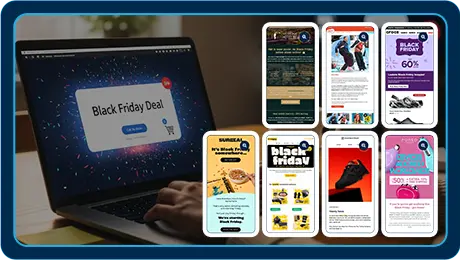Practical knowledge and information about marketing
We create a lot of interesting content about marketing. Take a look at our whitepapers, case studies, blogs, guides and webinar recordings.
No match found
Unfortunately, the search or criteria you selected did not yield any results. Change your search or criteria.
If you have any questions or you need help, please contact us.
Black Friday Marketing Hub
Stress less. Sell more. Your toolkit for turning peak pressure into sales and customer loyalty. Everything you need for a successful campaign can be found in our hub.
5 CRM tips for effective data management
We will look into five ways to make your data cleaner and more reliable and make your team more inclined to accept the new concept so they can focus more on sales.
Clear Vehicle Data automates marketing and wins more clients with Spotler CRM
Clear Vehicle Data revs up sales coordination with Spotler CRM. Discover how they steer remote teams and streamline growth effortlessly.
How Kempinski Hotels saw an 84% satisfaction rate from email with a custom welcome journey
How Kempinski saw an 84% satisfaction rate with a custom welcome journey. Have a look inside Kempinski Hotels' email series.
Sports Technology Alliance (STA) Colorado Summit
We’re proud to be attending the Sports Technology Alliance (STA) Colorado Summit on 28–29 October 2025, hosted at USA Cycling HQ in Colorado Springs.
Email Marketing Tricks That Will Reap You Treats: How You Can Make the Most of Spooky Season
Discover the origins of Halloween, the psychology behind why fear sells, and frightfully good ideas to boost email marketing this spooky season.
WhatsApp vs Email: which channel really connects with today’s buyers?
Compare their strengths of these channels, from GDPR to engagement, and see how using both drives better buyer relationships. Read the blog!
No, Halloween Won’t Send You to Spam: Email Deliverability Myths Debunked
Worried “Halloween” or 🎃 in your subject line will tank deliverability? Don’t be. Learn what actually matters for inbox placement this season.
A/B-solutely Brilliant: The split-test results you’ll want to copy in 2026
Throughout 2025, we've been testing everything over email, landing pages and social. Think subject lines, CTA buttons, page layouts, social hooks and more.
Kickstart your campaign: how to get quick results with Spotler Activate
Quickly activate successful campaigns with Spotler Activate. Use proven journeys for more revenue, customer retention and rapid growth.
Automation in Action: Real customer wins, real email results
Join us for a live session packed with real customer examples, actionable strategies, and advanced automation tips that help you move from manual to meaningful.
Clutter to Clarity: Mastering Integrations and Contact Data in Mail+
In this hands-on Mail+ webinar, we'll show you how to take control of your contact database and make integrations work for you, not against you.
Google Update: What’s changed in Gmail and Postmaster Tools?
Google refines email deliverability with smarter Gmail sorting and Postmaster Tools v2 insights for better sender performance.
The secrets to retaining Black Friday buyers this festive season
Learn how to turn one-time Black Friday shoppers into loyal customers with festive flows, retention tactics and post-purchase engagement.
Black Friday campaign planning
Boost your Black Friday marketing with this quick-reference infographic which polled ecommerce marketers on planning!

